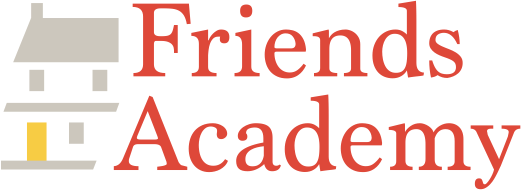Exploring Black History, Voice, and Identity in February and Beyond
Written by Andrea Miller
As a Quaker school, Friends Academy believes in embedding and threading its Quaker principles and values within the curriculum so that students can learn real-world cultural competencies, like discourse and collaboration.
A recent Newsday article explored how local Long Island schools weave Black history into their curriculum throughout the year – during Black History Month and beyond. The article includes examples from all three divisions at Friends Academy.
"Diversity, equity, and inclusion efforts prepare our students to be thought-leaders in our diverse society and multi-cultural workplaces," explained Director of Diversity, Equity, + Inclusion Camille S. Edwards. Specifically, the school's values empower teachers and students to consider issues of equality and equity across disciplines. "Focusing on equity supports us in creating a unique experience for each and every child so that they can thrive in their academic journey and gives each a true sense of belonging," added Edwards.
Upper School
Capped at 14 students, Director of College Counseling Ed Dugger has been teaching Narratives of African American Identity seniors every spring semester for 15 years. The course focuses on the role narrative has played in shaping the experience of Americans of African descent from the 19th century to the present and intertwines current Black guest speakers who speak with students about their personal experiences – from single mother and recent Westbury HS graduate Valerie Orton, whose story was profiled in Newsday, to Councilwoman Viviana Russell of North Hempstead, to 105-year-old Josephine Folkes, whose great-grandfather was born enslaved.
Dugger uses hands-on interactive projects, such as one that was inspired by contemporary Black artist Carrie Mae Weems, that involved listening to authentic music sung by enslaved African Americans, and personal artwork creation through image layering that speak to the notion of generational loss and separation within African American families. By using the narrative of slavery, Dugger hopes that this will help his students and others to overcome their fear of talking about this part of American history.
"There is a fear that it will trigger people, either through ancestral fear or guilt. Ultimately, we need to stop being afraid of looking slavery in its eye," said Dugger.
Middle School
In February, fifth and sixth grade Science teacher Dan Kriesberg created a lesson that illustrated the lack of recognition Black American scientists have received over the decades; specifically, that a Black scientist has never won the Nobel Prize. Sharing hundreds of biographies and accomplishments of Black scientists with his class, Kriesberg challenged his students to pick one, research, and then present why that scientist should be awarded the Nobel.
"When we exclude people, we lose out on their gifts, achievements, and inventions. It's unfair to all of us," shared Kriesberg. This spring, Kriesberg is also proposing and planning a course that would connect and draw parallels between the necessary strength of biodiversity in nature with the important value of diversity within human systems.
Lower School
Throughout the year, third grade teacher Nikita Desai integrates Black voice and perspective into the curriculum. Students learn about various Black changemakers that have shaped American history as a foundation for understanding the struggles, as well as the celebration of Black joy, such as Wangari Maathai, an environmentalist and the first African to win a Nobel Prize; Marie Van Brittan Brown, inventor of the home security system; and tracing Frederick Douglass' fundamental role in the women's suffrage movement in Seneca Falls to the current-day Black Lives Matter movement.
Students also learn about Black activists who are children and are shaping history as we speak (i.e. Marley Dias, Naomi Wadler, Amanda Gorman). Towards the end of the year, students also learn about the interactions between Europeans, enslaved Africans and Indigenous people.
Work around self-identity is pivotal in Desai's class. "One can not begin to understand other people's perspectives, if they do not understand who they are. And, this work must start early." Students construct identity maps using social identifiers and then are asked to reflect on the query – What happens when one of the identifiers is taken away from you or disrespected? "This helps students understand the inequalities and injustices BIPOC (Black, Indigenous, & People of Color) have faced and still face today," explained Desai.

